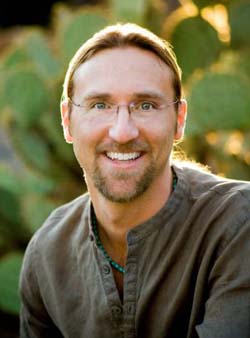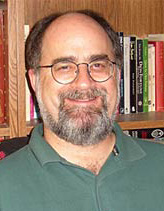By Jonathan Ellerby
Originally printed in the Summer 2009 issue of Quest magazine.
Citation: Ellerby, Jonathan. "The Path of Service." Quest 97. 3 (Summer 2009): 90-94.
 The elevator moved slowly to the fourth floor. It was big enough for the wheelchairs and hospital beds that came in and out all day. Since my visits were in the evening hours, however, I was often the only one aboard. I stared at the outdated wood veneer and faded chrome handrails. The dingy floor and doors showed decades of wear and tear, and the occasional moans of the gears reminded me of its history—once shiny, promising, and new.
The elevator moved slowly to the fourth floor. It was big enough for the wheelchairs and hospital beds that came in and out all day. Since my visits were in the evening hours, however, I was often the only one aboard. I stared at the outdated wood veneer and faded chrome handrails. The dingy floor and doors showed decades of wear and tear, and the occasional moans of the gears reminded me of its history—once shiny, promising, and new.
I always said a prayer as I rode up to the spinal cord injury and amputee unit at the rehabilitation hospital. I wanted to be prepared for an evening of visiting and for bittersweet surprises that might be waiting. When the elevator doors opened, I could feel myself entering a new world.
It was quiet at night—strangely quiet—and the halls were sterile, white, aged. The day was done, and there was a different mood emerging as patients settled in for rest and the staff retreated for the day. A new rhythm emerged: the distant sound of a television, the occasional sharp tone from a computer monitor, the soft ring of a phone in the nursing station.
Staff members were friendly, attentive, and kind; and patients were typically subdued, mostly contemplative, depressed, or tired from the day's physical therapy. They were there because of something serious—something life-altering. Sadly, a surprising number of people on this unit of dramatic and extreme injuries and illnesses were under thirty-five years of age.
Perhaps the inner-city location played a role or perhaps it was the fact that patients from the surrounding rural region were funneled there for the comprehensive services offered at this site. The unit contained an amazing cross-section of society: old, young, diabetics, accident survivors, surgery casualties. A disproportionate presence of Native American and low-income people filled the beds.
Many lived in this rehabilitation hospital for several months; few were there for relatively short stints. Because of the long stays and complicated circumstances, it was an ideal and often challenging place to provide spiritual counseling and emotional support. As part of my chaplaincy training, I'd selected this unit to do volunteer work because I needed to accumulate hours of practice, but more from a deeper need to give back—a desire to serve a community of people who seemed to have little support.
The unit manager was a wonderful and ambitious woman who wanted more for her patients, but the hospital's budget restricted psychosocial care to a minimum. It was my pleasure to offer extra hours. When I began, I felt a sense of valiant pride. I had a secret ambition to be "the one to go the extra mile" in order to help the "less fortunate." I recall my first visit. Only hours after I began my work, it became clear that I'd greatly underestimated my task. I'd also underestimated the costs...and the rewards.
During my first week of visits, I met Vera, a Native American woman who changed my life. She was from a small Cree Nation community in central Manitoba, Canada, and she was dangerously overweight. Vera was in her mid-sixties, but she appeared much older, as she clearly bore the ill effects of a life full of challenge, loss, and chronic health problems. I examined her medical chart and created an image of her in my mind, but when I entered her room, I was shocked.
It took me months before I could fully grasp the overwhelming reality of a body that was truly in decay and deterioration. This was the beginning of that adjustment. Vera's complexion was ashen, she looked exhausted, her size was of concern, and the empty space in the bed where her leg used to be was a sign of worse things to come. There was a faint sickly odor in the dark room, which was scarcely illuminated by a reading light beside her bed. The other bed in the room was empty. The winter night outside was cold and black.
I was a bit nervous as I entered the room and introduced myself. I asked simple questions about her well-being and mood. Vera struck me as a kind of medical iceberg in that even to the untrained eye, it was obvious that any conditions identified were only a visible fraction of an immense complexity at work in her body and life.
I sensed myself already pulling away from her emotionally, and somewhere in the back of my mind, I could feel my heroic intentions diminishing. Rationalizations about why I probably shouldn't spend much time with this patient slowly surfaced. They attempted to hide my growing discomfort.
To my surprise, Vera responded to my presence and was far less reserved than many of the other Native American people I'd worked with in hospital settings. At first she was quiet and just stared at me, and as I ran out of pleasantries, we gazed at each other awkwardly. Vera looked away, and I felt that I'd overstayed my welcome. I immediately thought about leaving, but then she reached out.
"It's nice you came. I'm very lonely here," she said in a faint voice with a Cree accent. She cleared her throat a lot.
"No one comes to see me. My kids live and work back home, and it's so far away that none of them can make the trip. They have their own problems to deal with anyway. My eldest boy used to live in the city here. He would have come to see me, but he was killed two years ago in an accident." She paused and closed her eyes as if to swallow the pain of the memory.
"My husband is gone, too. He died of diabetes. It's been five years." She paused again. Pointing to the empty space in her bed beneath the sheets where her right leg was removed, she continued: "That's why they took this: diabetes. They want to take the other one now.
"How will I get around? Back home on the reservation, most of our streets are still unpaved. There's just dirt. When it rains, you can't get a wheelchair through the mud. But I can't stay here either—it's too lonely in the city. My husband didn't want surgery. He was a fisherman all his life and always worked so hard. He only came to the city once—to the hospital. But he never returned. When he found out how sick he was, he drank himself to death. I never drank. I went to church almost every day to pray for him. I tried to get him to go with me, but I guess we never did get along."
She paused as her breathing became strained. "I always went to church, since I was little. I think he hated that about me. It made him feel guilty about his drinking, so he used to beat me up. I couldn't stop going, though, because it was the only place I felt safe.
"He was always drinking, always angry. And it just got worse at the end. I guess I knew it would be like that, but I'd always hoped it would turn out differently."
There was such sadness in her eyes, and I was at a complete loss for words. The immensity of her pain was more than I could bear. Most patients take their time to share such intimate details about their lives. In the hospital where the majority of my visits were unannounced and unrequested, people usually needed time to build a sense of rapport and connection. Then they'd eventually begin to open up more. Vera was different.
I was thinking about all those visits with patients, always wishing they'd share sooner. I never realized, however, that the timing was really to my benefit. I was unprepared for the sudden and intense nature of Vera's story, and it left me reeling. Up to that point in my training, I'd helped people face many of life's traumas and setbacks. But it was still all new to me, and this was too much and too honest—abuse, loss, illness, poverty, isolation. Then I remembered my commitment: service would be my gift, my path.
So I pulled a chair over to her bed, and we quietly sat together. Vera stared at the ceiling. I recalled a practice that I thought might help me feel better, if not her as well. I closed my eyes for a moment and imagined my heart as a large, glowing pink rosebud. Then I took some slow, deep breaths into my belly and imagined it opening into a radiant bloom. I said a little prayer asking for her healing and comfort and visualized a soft white light shining out from my heart to hers. I pictured a beautiful light of healing surrounding her.
Vera turned to me and smiled as I opened my eyes. Her eyes were bright, and she said, "Thank you. Can we say the Lord's Prayer together?" I was caught off guard. It was as if she felt the "energy" I was sending.
"Of course," I replied, and we began reciting, "Our Father, who art in heaven. . . ."
We held hands as Vera led the prayer, her voice growing stronger with each word. When we came to the end, I paused and she continued praying for healing for her grandchildren, children, and community. She prayed for her husband's peace in the Spirit and for the ability to forgive him. She prayed for me and the "hard work of the heart" that I was doing. She prayed for all the people in the hospital—staff and patients. Finally, she prayed for herself. I was moved by the sincerity and generosity of her wishes for me, a stranger. I felt myself choke up with emotion.
"I haven't been able to pray since I got here," she said. "I felt like maybe my life was a failure and that God was disappointed in me. This place can feel so empty. No Spirit. But you came, and I can feel that you care. You want to do what's right. It makes me feel like I am worth something. People do care, don't they? God didn't forget about me. You're the proof!"
My hopes of being a hero dissolved in a wave of deep humility. I was embarrassed for the ways I'd judged Vera in my mind when I had first arrived. I felt her unconditional acceptance despite just having met me. I found myself aware of an awakening in her—and in me as well. As her mood changed, I saw a twinkle in her eye. I felt a sweetness in her voice and presence. As she spoke of her gratitude for my company, I felt myself falling under the spell of compassion that was growing between us.
As I gazed at Vera, I saw images of her at different ages floating through my mind. I saw her as a young mother, a beautiful child, and as an active member of her community. I saw story after story flow through me—a gentle stream of thoughts and feelings.
"Vera," I said, putting my hand on the remaining part of her amputated leg, which was missing from the knee down, "God is not punishing you, and you haven't disappointed anyone. Life isn't easy, and it rarely goes the way we expect. But there's always hope, always change, and always something greater to remember and stay connected to. It's a choice, isn't it?
"I know that your children want you home, and your community misses you as much as you miss them. If we're going to get you back soon, you can help by lifting your own spirit. 'Standing tall' is something we feel inside; it's not about your legs or how fast you move. Try to pray more, and think of the good times that might be waiting ahead. What else can you do with the time you have? Remember springtime at home, and the fresh smell of rain on those muddy country roads."
She smiled and held my hand tightly as I got up to go. "You'll come back?" she asked.
"Of course. Every time I'm here." And I did. I visited her every time I was on the unit. She and I became friends, and her mood and energy steadily lifted. Even though she had to have part of her other leg amputated, I watched the changes in her attitude and saw her resilience grow from one visit to another.
One day when I arrived on the unit, one of the nurses stopped me in the hallway and asked me to be sure to visit Vera. I asked if she was OK. The nurse explained that she'd been doing well emotionally but was experiencing pain in her newly amputated leg.
"Every time you visit," the nurse explained, "her discomfort goes away. We don't have to give her any pain meds for at least twelve hours or more after you leave. When you aren't here, though, she needs them every four hours. Whatever you're doing, keep doing it!"
I was surprised to hear this and felt honored, but I knew in my heart that I wasn't doing anything for Vera. She was doing it, and a Higher Power was at work. Her faith, prayers, and commitment to see the positive whenever possible was her medicine. I was just the lucky person who got to be a part of it.
Love All, Serve All
Vera helped me see that every person—no matter how sick, broken, sad, or angry—has a story and a precious heart within. We all have a tender soul and a life of memories. Each of us lives with the longing to be in the presence of love. As that love in me grew for Vera, I found it easier to "turn it on" for others in need. I found that when I left the hospital, all the love and attention I thought I'd "given away" was somehow still within me. Even after some of the hardest days, I felt tremendous love and gratitude. As I gave, I received.
After I met Vera, I never left depleted or depressed about the suffering I encountered. I walked to my car and made the drive home with a sense of awe and gratitude. I felt filled with love and privileged to be part of the healing journey of so many. Instead of despair, I found myself awakening to the spirit of God and the goodness in all things. The sacred isn't just in nature, beauty, and good fortune. It also resides in hard times, sad occasions, and tragedies—maybe more so. I found light in the darkest moments, hope in the broken, and lessons from the lost. The miracle of love and service is like a lit candle. It can light the flame of other candles. The flame burns without going out or being diminished, no matter how many new candles it lights. This is the path of service.
My practice of service allowed me to realize that the presence of the sacred can be in all things, in all people, and at all times. Good or bad, happy or sad, healthy or sick, we can feel the presence and power of a higher love and wisdom that is there for everyone who reaches for it, regardless of culture or religious beliefs. Giving of myself to others gave me more than I could have ever imagined.
The essence of the path of service is the desire to honor the sacred in the created world through a commitment to help and heal. Rather than turning our attention and energy to an intangible force or experience, we seek to know the sacred in the everyday moments of our lives. We choose an act, a career, or a type of volunteer work through which we can show our devotion and express our gratitude. The writings and recorded lectures of the celebrated American spiritual teacher and healer Ram Dass were profoundly helpful and instructive in my exploration of the path of service. To this day, I recommend his book How Can I Help? to anyone interested in this practice.
Get Involved
The path of service isn't about writing checks to charities or recycling waste at home (although both are important actions). The path of service involves openhearted action—that is, rolling up your sleeves and getting your hands dirty. It's about caring for and working with others without a desire for reward or compensation. It's about being a part of the healing of this world with the awareness that in true healing there's no hierarchy—there's no line to be drawn between the helper and the helped. All people can be healers, and everyone is in need at times.
Your path of service could involve working with children or animals or even healing the environment. You may also wish to help those who are battling poverty, illness, or loneliness. There's no limit to the myriad situations and causes that require support. The key is to give yourself freely, without any self-serving intentions. Honor the sacred in yourself and what you serve. You might volunteer your time, talent, labor, or experience. The path of service simply asks that you make your service an intentional and regular commitment.
Don't let the simplicity of the practice deceive you. To serve without judgment or attachment will test you in many ways. The harshness and injustice of life can defy logic; true service may make you uncomfortable at times. It's always easier to do nothing or claim that the practice isn't right for you. Despite the reasons for resistance, the path of service promises a personal experience of the transformative power of the human spirit. When you seek to love and serve all, you'll find miracles in every step you take.
Much the way Vera taught me years ago, the path of service is about learning to live from the heart. I didn't have to do much to help her. I just had to be honest with myself and fully present with her. I had to trust that I'd never have all the answers, and that would be good enough. To be able to walk with others in the face of life's tragedy and mystery with our hearts vulnerable and eyes open is the cultivation of spiritual awakening.
You Are the Gift
The greatest gift we have to offer is our presence: unconditional, loving, and affirming what is. In service, we come face to face with the Spirit of life and know its astounding capacity to triumph, as well as its delicateness in the midst of uncertainty. If we look at what we resist when we serve, in time it will set us free.
The way we help heal ourselves is a precious dance. Reflecting on his life and the relationship between service and spirituality, Ram Dass commented, "I am arriving at that circle where one works on oneself as a gift to other people so that one doesn't create more suffering. I help people as I work on myself and I work on myself to help people."
Jonathan Ellerby holds a doctorate in comparative religion and is spiritual program director for the Canyon Ranch Resorts. This article is excerpted from his book Return to the Sacred: Ancient Pathways to Spiritual Awakening, published in January 2009. Reprinted with permission of Hay House.



 The elevator moved slowly to the fourth floor. It was big enough for the wheelchairs and hospital beds that came in and out all day. Since my visits were in the evening hours, however, I was often the only one aboard. I stared at the outdated wood veneer and faded chrome handrails. The dingy floor and doors showed decades of wear and tear, and the occasional moans of the gears reminded me of its history—once shiny, promising, and new.
The elevator moved slowly to the fourth floor. It was big enough for the wheelchairs and hospital beds that came in and out all day. Since my visits were in the evening hours, however, I was often the only one aboard. I stared at the outdated wood veneer and faded chrome handrails. The dingy floor and doors showed decades of wear and tear, and the occasional moans of the gears reminded me of its history—once shiny, promising, and new. Before 9/11, I liked to consider myself a defender of Islam. I never formally converted to Islam and my adherence to sharia (the Muslim code of behavior) was lax at best, but I spent twenty years as a publisher and writer on spiritual affairs visiting Turkey and attending interfaith events, trying to encourage a deeper understanding of Islam in the West. I grew to view the Abrahamic faiths—Judaism, Christianity, and Islam—as one in essence, and ultimately reconcilable and complementary. While I was certainly aware of the fundamentalist camps within these three religions, I enjoyed the luxury of keeping their proponents at a safe distance from my little oasis of tolerance.
Before 9/11, I liked to consider myself a defender of Islam. I never formally converted to Islam and my adherence to sharia (the Muslim code of behavior) was lax at best, but I spent twenty years as a publisher and writer on spiritual affairs visiting Turkey and attending interfaith events, trying to encourage a deeper understanding of Islam in the West. I grew to view the Abrahamic faiths—Judaism, Christianity, and Islam—as one in essence, and ultimately reconcilable and complementary. While I was certainly aware of the fundamentalist camps within these three religions, I enjoyed the luxury of keeping their proponents at a safe distance from my little oasis of tolerance.